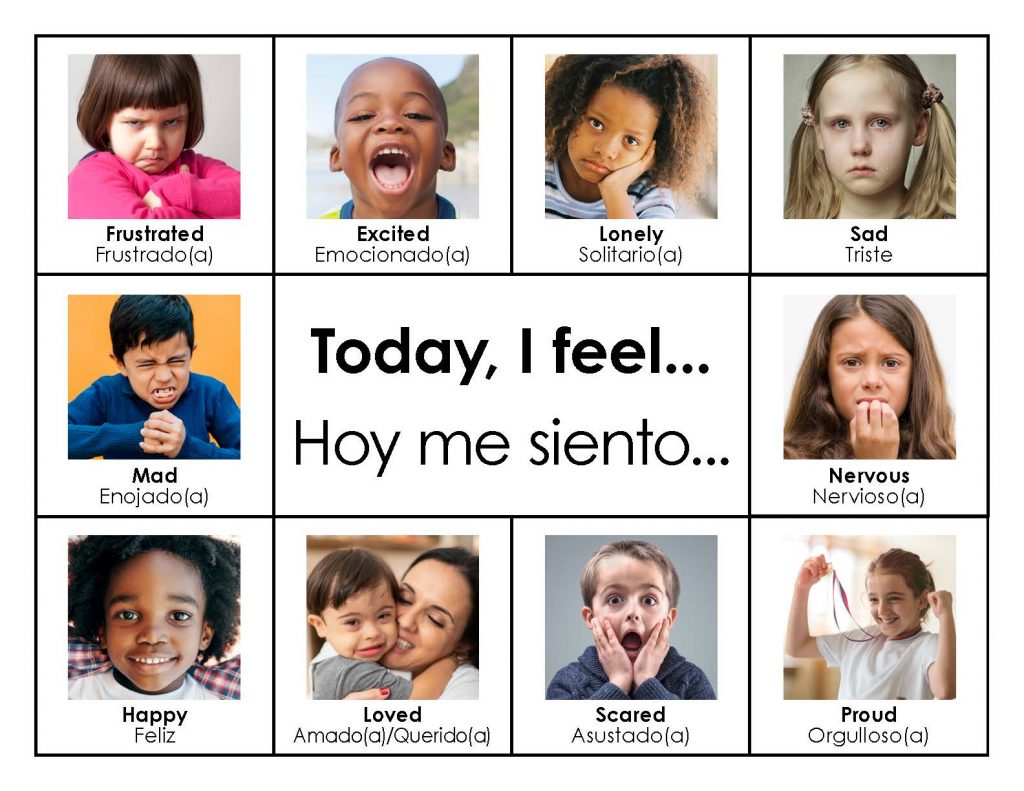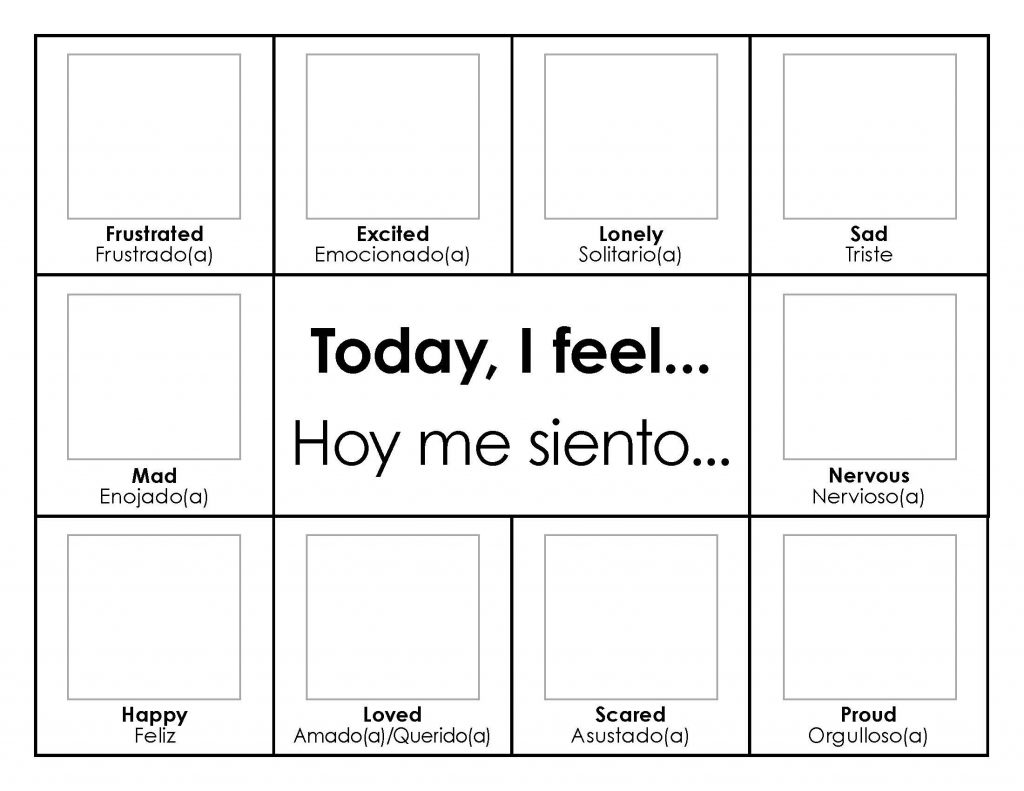
Childhood is one big roller coaster of emotions. Beginning with toddler tantrums, kids experience highs, lows, and myriad confusing feelings in between. As adults, we are able to at least identify our emotions. For a child, it’s bewildering especially when they don’t have the words to express how they’re feeling. That bewilderment can lead to frustration, making it hard for children to listen, pay attention, and learn. What can we do to help them navigate challenging big feelings? (Feeling Faces information adapted from National Center for Pyramid Model Innovations (NCPMI)
Express yourself: Feeling Faces
Important tip! The best time to talk about feelings with your children is when they are not in the midst of an emotionally-charged moment. Create a calm space and try this activity where you and your little ones can explore and practice the language and skills to express emotions.
- Use pictures (like the Feeling Faces here) to talk about, identify, and describe different emotions that children (and adults) experience.
- This will help them identify those big feelings and give them a vocabulary to talk about their feelings.
- Start with just a few emotions then gradually introduce additional and more complex emotions to expand their vocabulary. Teach a balance of “positive, comfortable” and “negative/uncomfortable” feelings.
- The Feeling Faces are also great “emotion check-ins.” Children can draw their own faces (print out the below) to let you know, “This is how I’m feeling today.”
